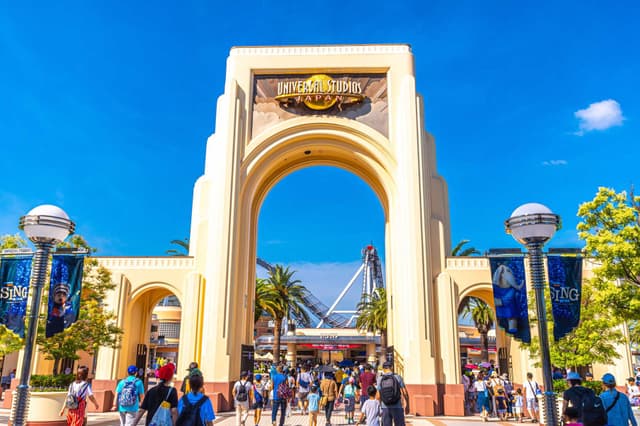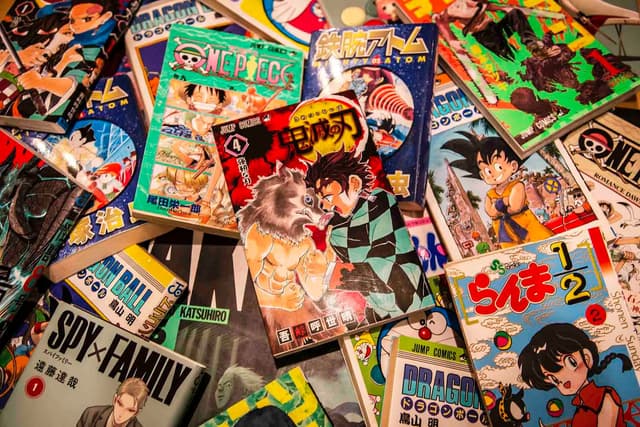
How to Get from Tokyo to Kyoto by Shinkansen (Bullet Train)
James Saunders-Wyndham

James Saunders-Wyndham
Table of contents:
When choosing between Japan's Shinkansen train and airplane, I'll take the Shinkansen every time! I've been traveling around Japan since the mid '90s and in my opinion, taking the bullet train from Tokyo to Kyoto is the only way to go. In fact, I would argue that it is a rite of passage for any first-time visitor to Japan to take the bullet train down to Kyoto for a few days.
I've thought carefully about this, and I've laid out the things that you should know about traveling between Tokyo and Kyoto by Shinkansen.
One of the most popular ways to travel from Tokyo to Kyoto is by taking the bullet train, also known as the Shinkansen.

Boarding the bullet train at Tokyo Station is so much easier than checking into an airport. I love the speed of the Shinkansen and seeing it leave the view Tokyo skyscrapers behind as I head back to traditional Kyoto. As the scenery gradually changes, the urban landscape gives way to countryside views, wet rice fields, and neat green tea bushes. As you approach Kyoto Station, you will notice Japanese suburbia open up.
Taking the bullet train rather than an airplane makes me feel more connected to Japan as I get to see more than just the urban sprawl.








Here are the prices for Shinkansen Bullet Train tickets one-way from Tokyo to Kyoto:
| Shinkansen Ticket Type | Ticket Features | Tokyo-to-Kyoto Ticket Prices |
| Green Car Tickets | First-class option with extra comfort | ¥19,000 ($121 USD) |
| Reserved Seats | Guarantees a a reserved seat of your choice (dependsing on availability). I recommend during peak travel times. | ¥14,370 ($92 USD) |
| Non-Reserved Seats | The cheapest ticket, but seating is first-come, first-served. | ¥13,320 ($85 USD) |

If you're traveling extensively, consider the Japan Rail Pass for unlimited rides on JR trains, including some Shinkansen (except Nozomi and Mizuho trains).
Purchase it before arriving in Japan and activate it at a JR office upon arrival. Remember to reserve seats in advance during holidays and carry your passport when buying or using the pass.
If you are interested in purchasing a Japan Rail Pass, click on this link to to purchase a JR Pass from the official Japan Trail site.

Buying your Shinkansen tickets for travel from Tokyo to Kyoto is straightforward. You have several options available.
Yes, you can use a Suica card or any other IC card to board the Shinkansen. However, it must be on non-reserved seats in the JR East service area.
Also, you need to be aware that there are some restrictions:

There are several different types of Shinkansen trains:
Note: Japan Rail Pass, it does not cover the Nozomi Shinkansen!!!

| Distance | 513 km (319 miles) |
| Fastest Train | Nozomi Shinkansen |
| Travel Time by Shinkansen | 2 hours 20 minutes |
It's worth noting that the bullet train routes vary, with some trains making stops at major cities along the way, while others offer direct service between Tokyo and Kyoto. Be sure to check the train schedules and choose the option that best suits your travel plans.

One of the most popular ways to get from Tokyo to Kyoto is by taking the Shinkansen bullet train. The bullet train offers:
While you can take an overnight bus from Tokyo to Kyoto, the Shinkansen is recommended for its speed and comfort. It's an essential part of any trip to Japan.

Yes, you can see Mount Fuji while taking the Shinkansen (bullet train) from Tokyo to Kyoto. However, if you want to see Mount Fuji from the train, think about the following points...
It's not guaranteed that you will see Mount Fuji during your journey. So, consider yourself lucky if you get a glimpse of this iconic Japanese mountain during your Shinkansen ride.

Both Tokyo and Kyoto offer a plethora of must-visit attractions that showcase the unique aspects of Japanese culture, history, and beauty.

Kyoto, the ancient capital, is often referred to as the cultural heart of Japan, and for good reason. The city is home to hundreds of temples, shrines, and gardens that offer a glimpse into Japan's rich history and traditional way of life.
A visit to the iconic Fushimi Inari Taisha Shrine with its thousands of vibrant red torii gates is a must-do. The serene Zen gardens of Kinkaku-ji (Golden Pavilion) and the majestic Kiyomizu-dera Temple are also worth exploring to fully immerse yourself in Kyoto's cultural heritage.

Tokyo is a city that never sleeps, and its modern marvels are a testament to its status as one of the world's leading metropolises. The soaring skyscrapers of the Shinjuku and Roppongi districts offer panoramic views of the city, while the upscale shopping districts of Ginza and Omotesando attract fashion enthusiasts from around the globe. Don't forget to explore Akihabara, Tokyo's famous electronics district, which showcases the latest advancements in technology and gaming.
The best way to travel from Tokyo to Kyoto is to take the Shinkansen, also known as the bullet train. It offers a fast and convenient journey, with travel times as short as 2 hours and 15 minutes on the Nozomi train. Travelers can also use the JR Rail Pass for affordable access to other Shinkansen options, such as the Hikari.
The cost of the bullet train from Tokyo to Kyoto depends on the type of train and seating class. A one-way ticket on the Nozomi Shinkansen typically costs around ¥13,320 ($85 USD) for an unreserved seat and ¥14,370 ($92 USD) for a reserved seat. If you have a JR Rail Pass, you can use it for the Hikari or Kodama Shinkansen, making the journey more affordable.
Yes, you can use the JR Rail Pass for the Tokyo to Kyoto trip. The pass covers the Hikari and Kodama Shinkansen but does not include the Nozomi train. The JR Rail Pass is a great option for travelers planning to visit multiple cities in Japan, as it offers unlimited rides on JR trains for a fixed period.
Traveling from Tokyo to Kyoto by bullet train takes approximately 2 hours and 15 minutes on the Nozomi train. The Hikari and Kodama trains are slightly slower, with travel times of about 2 hours and 40 minutes to 4 hours, depending on the route.
Yes, you can visit Kyoto in one day from Tokyo using the Shinkansen, but it will be a very busy schedule. Travel times are short, 2 hours and 15 minutes each way on the Nozomi train, so a day trip is doable. My advise is to plan your day in Kyoto carefully. Plot a route between temples that are close to one another to avoid wasting time. Look at Sanjusangendo, Kiyomizu-dera Temple, and Kennin-ji Temple. These places are all close to one another and will allow you to see the main attractions while saving time.
Loading Comments...

I've been immersed in Japanese culture and daily life for over 30 years and am proud to call Japan my home. Originally from Australia, my journey has taken me from teaching at Japanese universities to traveling extensively across the country, uncovering its hidden gems. As a web developer, I built Romancing Japan from the ground up to share these experiences with you. Whether it's the charm of old Kyoto, the pulse of Tokyo, or the tranquility of the countryside, I love helping others discover the magic of Japan—one story at a time.





